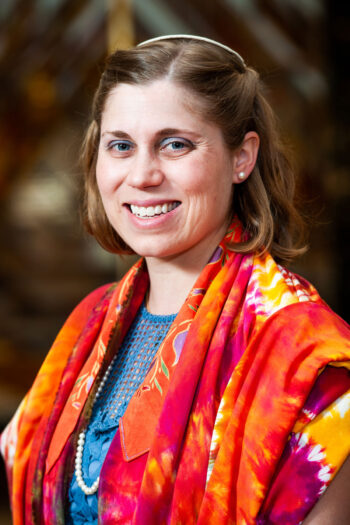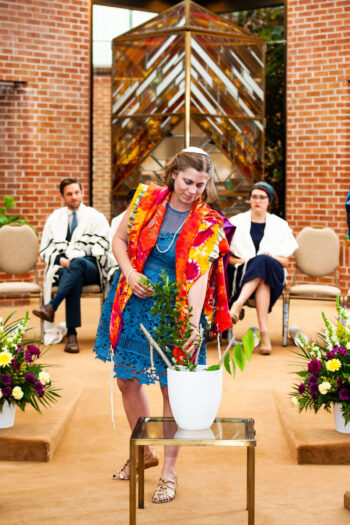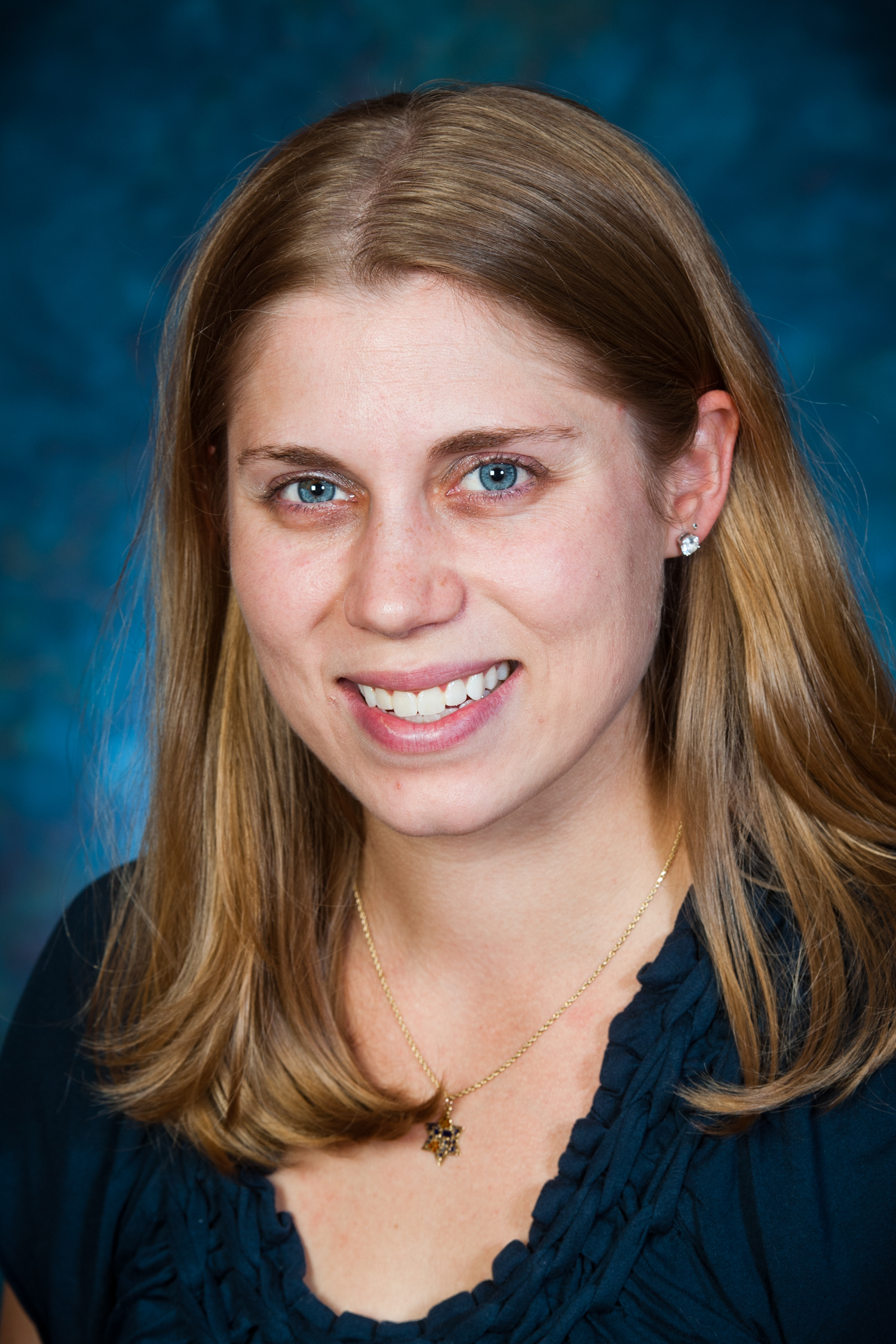This High Holiday sermon won the 2016 George Goldman-Or Hadash D’var Torah competition.
Sometime in mid-July, I’m sitting at the bedside of a young woman, Ms. Mei who has moved to the US from China. She works at Thomas Jefferson as a biophysicist in Philadelphia and has unfortunately contracted encephalitis, a very serious infection of the brain. The sight of Ms. Mei’s room overwhelms me; the constant beeping of the various machines, the tubes in her throat, her arm, her neck, and the TV that’s on even though she isn’t awake.

I have no idea if she can hear me or even feel my presence, but I visit Ms. Mei everyday just to check in. I sit next to her bed, and hold her hand as she fights for her life. Sometimes I speak to her, not knowing if she understands English. Other times I sit silently, not knowing what to say. I don’t know if she’ll ever wake up. But for now, I know that Ms. Mei deserves the company and so I free myself of distractions and sit by her side. Weeks go by, and I keep coming back, each time I quiet my own mind to be there, to be with her, to be present. I think to myself how hard the silence is, how hard it is to see someone this way, and yet how beautiful and simple our visits are.
I don’t know why I keeping coming to visit; I don’t know if I’m helping her; and I don’t have any outward goal in being there. All I know is that there is something holy about this time we spend together.
I’ve been wondering what holiness looks like. We use the word holy often in synagogue. Such as: this is a holy community, or a kehillah kedoshah. We say that God is holy and we seek to emulate God.
And yet, we can’t see holiness. There is no postcard, or snapchat of what holiness looks like. So how does one find holiness? How does one be holy? Dare I ask, how does one teach holiness? Are we seeking something much too elusive to find?
So, I set foot on my own journey of finding holiness. In order to do so I felt I needed to better understand what holiness meant. I began by figuring out how holiness is defined in Judaism.
In Hebrew there are different ways of defining holy, or kadosh.
The first is: kadash. Kadash is the Hebrew root and the verb form. It means to be set apart, to sanctify, to be holy, to be treated as holy, and to act holy.
The second usage is kadosh. Kadosh is an adjective. Kadosh is used to describe someone or something that is inherently sacred. It is the adjective form kadosh that is used to describe God. Kadosh is the very essence of who God is, inherently holy, sacred, and set apart. God is unique, the only One of His or Her kind.
And the third form of holiness is as kodesh. Kodesh is a masculine noun which means a holy thing, holiness, and sacredness. We use kodesh to describe our holy objects or places: vessels like the aron kodesh (the holy ark), objects used strictly for connection to God, and the Sabbath [Shabbat kodesh]. God’s presence makes objects holy, such as the holy mountain [har ha-kodesh], the holy land, Israel, [eretz ha-kodesh], and Hebrew itself is even known as a holy language [la’shon ha-kodesh].
These descriptions of holiness are something we’ve entwined ourselves in. Like a tangled web, we use the nouns, adjectives, and verbs to link our objects, views of God, and personal beings with being holy. Just to reiterate; so far, we have language within Judaism for holiness as: a distinction of time and place, a way of being, and a sanctification of that which is inherently holy: God.
We live in a culture of consumerism, so the language to describe things as holy still didn’t feel like enough. I wanted to be able to feel, touch, and see holiness. But holiness isn’t something that one can buy. And it doesn’t just happen. I couldn’t demand a holy moment to happen, I needed to figure out how holiness existed. So, I tried to think about other ways in which holiness manifests itself in Jewish life.
I don’t know why I keeping coming to visit; I don’t know if I’m helping her; and I don’t have any outward goal in being there. All I know is that there is something holy about this time we spend together.
My first thought was about time. We Jews are organized with respect to time. We separate our time which allows us to distinguish between the ordinary and the extraordinary, the holy and the mundane. Each week we raise up our day of rest, the Sabbath, as holy time. Each year, we have time of introspection know as high holydays. We set aside the new month, Rosh Hodesh as its own special time complete with additional prayers. We raise up holidays as distinguished time. For example: We create holiness when we celebrate the harvest, liberation, and receiving Torah. We have lifecycle rituals that mark our own time in this world. These distinctions of time allows space for our ability to recognize holiness. We already have this way of structuring time, but do we think of it as holy? Do we look at what we are doing differently?
What if I suggested to you that instead of feeling joy at witnessing a wedding what might make it extraordinary is the feeling of holiness. What if I suggested to you that you could feel holiness weekly by slowing down and engaging in Shabbat. Maybe holiness is there at a family dinner, or in talking with your loved ones. Maybe holiness exists in a hike out in nature without the distraction of a cell phone.
Ok, I thought to myself. I get it, I can carve out time and find holiness that way. But where else does holiness exist? So, I turned to prayer. I thought about the prayers we say together daily, and on Shabbat. Each time we engage with Jewish prayers we are sanctify God’s name through holiness. Within Jewish liturgy there are many prayers in which we praise God. But there are also those in which we specifically sanctify God’s name as holy. Two specific examples are the Kedushah, and the Kaddish (which come from the same root as kadosh). The Kedushah is the third prayer in the Amidah, our personal prayers, or standing prayer. The prayer is translated from Kol Haneshamah, the Reconstructionist prayerbook, as such: “We sanctify your name throughout this world, as it is sanctified in the heavens above, and it is written by your prophet: ‘and each celestial being calls to another, and exclaims ‘Holy, holy, holy’ is the ruler of the Multitudes of Heaven! All the world is filled with divine glory!’ ” And they are answered with a blessing: “Blessed is the glory of the Holy One, wherever God may dwell!”
This prayer, the Kedushah, in which we praise God’s holiness comes from different pieces of scripture. The prophets: Isaiah and Ezekiel, as well as Psalm 146. These pieces of scripture try to evoke images of holiness. Images of angels constantly praising God with the words of “holy, holy, holy” And in Ezekiel, of a mystical encounter with God herself.
In response to the Kedushah prayer, Rabbi Mordechai Kaplan, the founder of the Reconstructionist movement, describes holiness as the manner in which we react to persons, objects, places and events which we regard as indispensable to human welfare and self-realization. That to be holy means for power and goodness to exist in perfect harmony. While I may agree with his idealistic notions of defining holiness, it doesn’t answer my question of how, but rather Kaplan states what holiness may be in more modern times.

So by this point in my journey of finding holiness I know we are able to act on the first two definitions of kadosh: we can distinguish time and even spaces as extraordinary, and we can praise and sanctify God. But I’m still left asking how do we ourselves be holy?
As July moved onward my patient, Ms. Mei, slowly begins to awake from her illness. She cannot talk but each day I visit she reaches for my hand. We communicate through our eyes, our smiles and our tears. The more alert she becomes, the more I talk to her. Until one day she is well enough to have her artificial breathing tube removed.
Nine weeks have passed. I enter her room gently one day, she seems to be asleep. I sit for a minute or two and then decide to let her rest. As I get up to leave, she begins to cry. Through her tears, I hear her voice for the first time.
She thanks me for being there with her every day when no one else was. She says she wasn’t sure what she had to live for, and couldn’t fathom all that she had been through. She wasn’t sure yet if she would get well. But she knew every day that I was with her, just there, holding her hand.
That night I went home and cried. By this point in the summer serving as a hospital Chaplain, I had helped various families through sickness, death, and improving health. Their stories had become a part of my consciousness and I felt their pain and joy along with them. But my encounters with Ms. Mei were different. Somehow these moments had transcended the ordinary into the extraordinary. So I thought more about the verb, kadash, how to be holy.
For my answer to this question, I turned to New York Times columnist David Brooks’s book “The Road to Character”. In his book, Brooks is on a search to “save his own soul.” He writes about the differences between “resume virtues” and “eulogy virtues”. Resume virtues are the skills and accomplishments with an outwardly extrinsic value; whereas eulogy virtues are those that are aspects of character that others praise when we may not be around. They are the intrinsic values of humility, kindness and bravery. Brooks argues that we have lost sight of these intrinsic values since we live in a society that overlooks the humble values of what matters most and stresses the achievements for success.
I wanted to be able to feel, touch, and see holiness. But holiness isn’t something that one can buy. And it doesn’t just happen. I couldn’t demand a holy moment to happen, I needed to figure out how holiness existed. So, I tried to think about other ways in which holiness manifests itself in Jewish life.
Brooks uses terms such as “the moral bucket-list” and describes people as two different categories. Those people who seek success in the world while others are more deeply committed to character and an inner life. For Jews, morality and holiness can be linked. Performing moral acts can lead to becoming a more holy person. In my own reading, Brooks defines holiness through the language of morality, but for me he is talking about the same thing.
Brooks argues that taking on moral actions and aspirational virtues helps us create the people we want to be, the community we want to be a part of and the legacy we want to leave. Brooks’ book left me asking the question: who do I need to be this year?
There was nothing overtly spiritual or religious about the time Ms. Mei and I spent together. We never prayed together, or spoke about religion. Yet, it felt nothing short of holy for me. My presence with her mainly involved silence. And yet I learned so much from her about the value of humanity; about the power of two people caring about the other one’s presence. About how to be holy, and to treat others as holy. And because of that, I felt holiness in that space. Among the beeping machines, and the most sterile of environments, our time together was sacred.
I know that I can’t tell you how to act in the world, nor am I going to. And I know that there are all sorts of bumper sticker slogans that may be saying the same thing like: actions speak louder than words; be the change you wish to see in the world; or think global, act local or even love your neighbor. I can tell you that those actions, those distinctions between the ordinary and extraordinary encounters, the ways in which we create time for what matters the most to us in our lives, those things do make a difference. I can tell you that I’ve noticed how much of a difference valuing one another makes. I can tell you that David Brooks is right, that eulogy virtues exist. I can tell you that when I sit down with families to remember their loved ones together they always highlight the ways in which that person was there for them. How the way they lived their lives mattered more than any accomplishment they had achieved.
I am not claiming to have solved any great puzzle, and I think my own search will continue. But I have learned at least this much: the smallest acts of kindness, showing up as community whether it’s asked of you or not, going the extra mile in helping your children achieve their goals, and leading by example, do matter. In fact, I think this is how we create holiness. Through our actions, by example, we teach holiness.
We may think of it as emulating the holy one, we may not. But when we do our best to listen to others, to show up, to volunteer, to make our community grow, holiness is created. It isn’t tangible, and I don’t think we can see it. But we can certainly feel holiness. You can feel what it is to be cared for by another member of your community, by your family, by your friends. You can walk into a room and feel that others believe in your success. You can feel the distinction between ordinary conversations and extraordinary ones. And you can in fact seek holiness. May you continue to seek in order to find.








